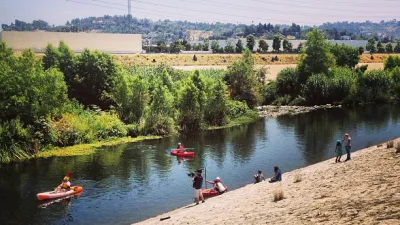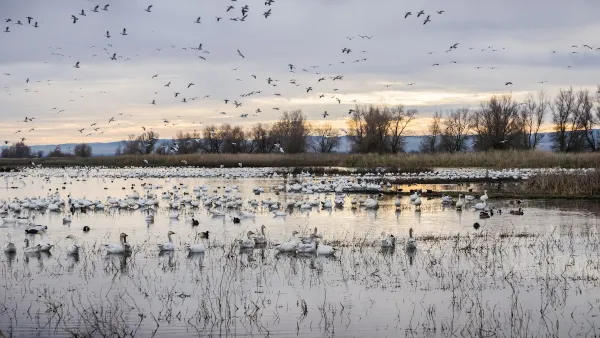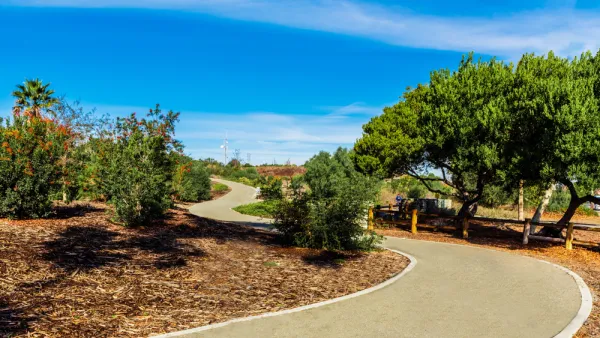When the U.S. Army Corps of Engineers announced its preference for a $1.08 billion plan to restore habitat in the Los Angeles River, many credited Lewis MacAdams's fight to change the city's relationship with its waterway over nearly three decades.

Despite its history as the ecological feature around which original Angelenos formed their settlement, the Los Angeles River has long been a concrete-encased flood control channel. That is now changing. On May 28, the Army Corps of Engineers announced that it would recommend Alternative 20 as its preferred approach for revitalizing the Los Angeles River. The decision, which marked a significant change from the Corps’ original plan to support the half-as-ambitious Alternative 13, was cause for Lewis MacAdams to celebrate. His non-profit, Friends of the Los Angeles River, began calling for river revitalization starting in 1986.
In an exclusive conversation with The Planning Report, MacAdams gives an overview of Alternative 20 and provides insight into the long process that brought about the Army Corps’ announcement--focusing on changing relationships between local, state, and federal players. In light of California's state-wide drought, he notes the relationship between water recycling and flow in the river. MacAdams also identifies the recreational activities already taking place there, and the opportunities soon possible due to the recent decision.
In his words, "The thrilling part of it for me, personally, is that Alternative 20 begins to fulfill some of my own goals from when I started Friends of the Los Angeles River. We will start to see habitat restored. When people ask me, 'How will you know when your work is done?' I always say, 'When the steelhead trout run returns to the Los Angeles River.' This won’t directly make that happen, but it’s a big step toward it."
FULL STORY: Lewis MacAdams on Army Corps’ LA River Revitalization Alternative 20

National Parks Layoffs Will Cause Communities to Lose Billions
Thousands of essential park workers were laid off this week, just before the busy spring break season.

Retro-silient?: America’s First “Eco-burb,” The Woodlands Turns 50
A master-planned community north of Houston offers lessons on green infrastructure and resilient design, but falls short of its founder’s lofty affordability and walkability goals.

Delivering for America Plan Will Downgrade Mail Service in at Least 49.5 Percent of Zip Codes
Republican and Democrat lawmakers criticize the plan for its disproportionate negative impact on rural communities.

Test News Post 1
This is a summary

Test News Headline 46
Test for the image on the front page.

Balancing Bombs and Butterflies: How the National Guard Protects a Rare Species
The National Guard at Fort Indiantown Gap uses GIS technology and land management strategies to balance military training with conservation efforts, ensuring the survival of the rare eastern regal fritillary butterfly.
Urban Design for Planners 1: Software Tools
This six-course series explores essential urban design concepts using open source software and equips planners with the tools they need to participate fully in the urban design process.
Planning for Universal Design
Learn the tools for implementing Universal Design in planning regulations.
EMC Planning Group, Inc.
Planetizen
Planetizen
Mpact (formerly Rail~Volution)
Great Falls Development Authority, Inc.
HUDs Office of Policy Development and Research
NYU Wagner Graduate School of Public Service





























